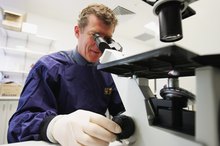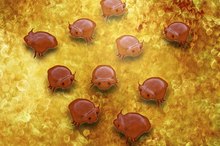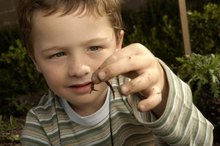List of Common Bacteria and Guardia Found in Creeks & Streams
According to the Centers for Disease Control and Prevention, drinking water in the United States is among the safest in the world. But the World Health Organization has reported 20 percent of the world population has no safe access to drinking water and more than 5 million people die annually from illnesses derived from contaminated drinking water, often carried in open streams, rivers and creeks. The hardy giardia and other disease-causing bacteria, known generally as coliform bacteria, can survive outside the body for months, spreading water-borne disease from animals or humans. Several common culprits cause symptoms that may range from mild indigestion to diarrhea, dehydration and death. Not all bacteria is bad. Some is needed for food digestion. But too much bacteria or the wrong kind can cause illness. Here are some of the problematic ones:
Giardia lamblia
Giardia lamblia is a common parasite that causes gastrointestinal illness. Also called Giardia intestinalis, the microscopic parasite is spread through human and animal feces. If carried in a stream or other unfiltered water supply, downstream ingestion will spread the diarrhea-causing disease called Giardiasis. It is also known as “beaver fever,” since wild animals living in and near water can be prime carriers of the disease, according to the New York State Department of Environmental Conservation. Healthy adults generally can get through a bout with no lasting damage.
Cryptosporidium
Diseases Caused by Drinking Water From the Bird Bath
Learn More
Cryptosporidium is a microrganism that burrows into the intestines and is transmitted to others through feces contamination in water. According to the Mayo Clinic, in most healthy people a cryptosporidium infection will produce a bout of watery diarrhea that goes away in a week or two. However, a compromised immune system can allow a cryptosporidium infection to be life-threatening.
E. coli
E. coli (Escherichia coli) bacteria live in the intestines of people and animals. They are usually harmless or cause brief diarrhea. Some strains, like E. coli O157:H7, cause severe, bloody diarrhea and abdominal cramps, along with organ damage, including kidney failure. E. coli is transmitted through contaminated water or food, such as raw vegetables and undercooked ground beef. Although healthy adults can withstand a bout of the infection, children and the elderly can experience life-threatening kidney failure called hemolytic uremic syndrome (HUS).
Cholera
List of Parasitic Diseases in India
Learn More
Cholera (Vibrio cholerae) is a bacteria carried in contaminated water that produces a strong toxin with deadly effects, called CTX. It binds to intestinal walls, interfering with the flow of sodium and chloride. The Mayo Clinic says this causes the body to secrete enormous amounts of water, leading to diarrhea and dehydration.
Typhoid fever
Salmonella typhi is a bacteria carried in contaminated water and food that can cause typhoid fever. Some of those infected carry the bacteria chronically and will continue to shed the disease-carrying matter in their feces throughout their lives. The Wisconsin Department of Health reports 12.5 million people annually are touched by this disease worldwide.
Related Articles
References
Writer Bio
Richard Nilsen writes poetry, fiction, features and news stories in upstate New York. He was an emergency mental-health consultant for 20 years and directed a mentoring agency for a decade. Nilsen is a black-fly control technician in the Adirondack Park, where he enjoys hiking, biking and boating.









